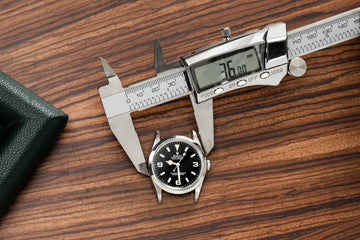Argos Blogs

Automatic Watches: Typical Service Intervals and Maintenance Costs Explained
An automatic watch is a small mechanical engine built to measure time through a series...
Read more
The Birth of the Wristwatch: A Turning Point in Timekeeping
It’s easy to assume wristwatches have always existed, seamlessly blending style and function. Yet the...
Read more
Beat Rate Explained: 21,600 vs 28,800 BPH: Is Higher Always Better?
When buying a mechanical watch, most people focus on its case size, design, or complications....
Read more
What’s a Jewel in a Watch Movement? Do Jewels Matter?
Many people assume that the “jewels” inside a watch are decorative gemstones, perhaps like the...
Read more
What Makes Stainless Steel “Watch Grade”? Understanding 316L vs 904L in Watchmaking
Stainless steel is the backbone of modern horology. From rugged dive watches to luxury chronometers,...
Read more
How power reserve duration is measured and extended in Automatic Watches
Among the most fundamental aspects of a mechanical watch is its power reserve: the amount of...
Read more
Watch Movements: A Comprehensive Guide
Just like an engine powers a car, the movement of a watch is what brings...
Read more
Which Budget Automatic Movement Reigns Supreme? Comparing the Movements used in Microbrands
A mechanical watch is more than polished steel or a refined dial; it’s a fusion...
Read more
Lume Science: C3 vs BGW9 vs Swiss Super-LumiNova Explained
In the world of watches, few features capture as much fascination as lume. The glow...
Read more
How Case Thickness Influences Watch Design and Wearability
Case thickness often decides whether a watch is simply good or truly great. When people...
Read more
How Power Reserve Indicators are Calibrated During Manufacturing
When people look at fancy watches, they often talk about the most complex parts, like...
Read more
The Pioneer in India: The Untold Story of Favre-Leuba and Other Swiss Brands
For many generations in India, a wristwatch wasn't just a way to tell time; it...
Read more